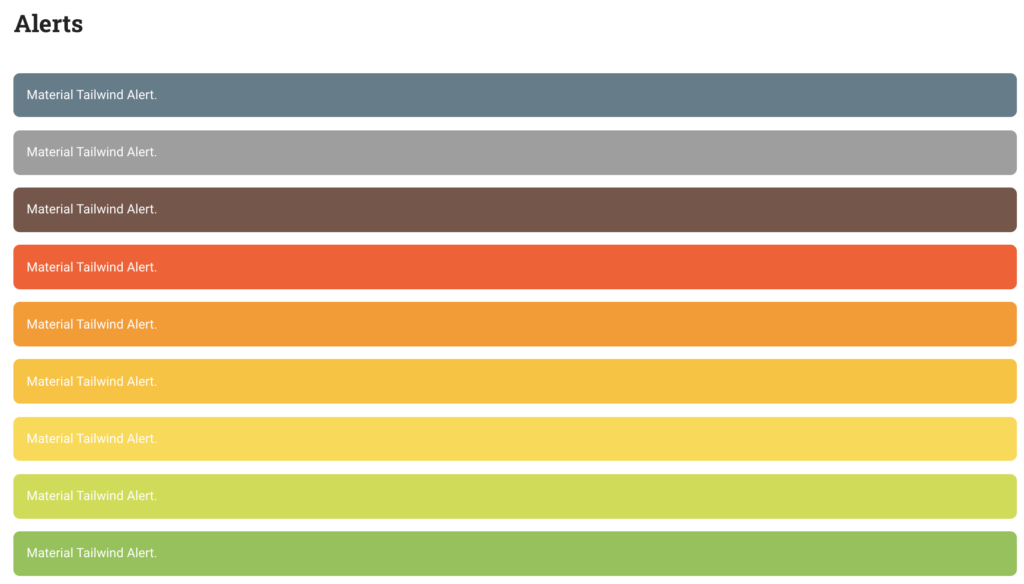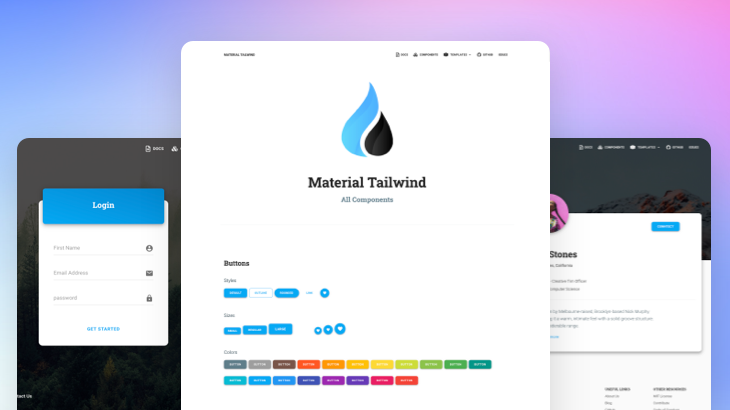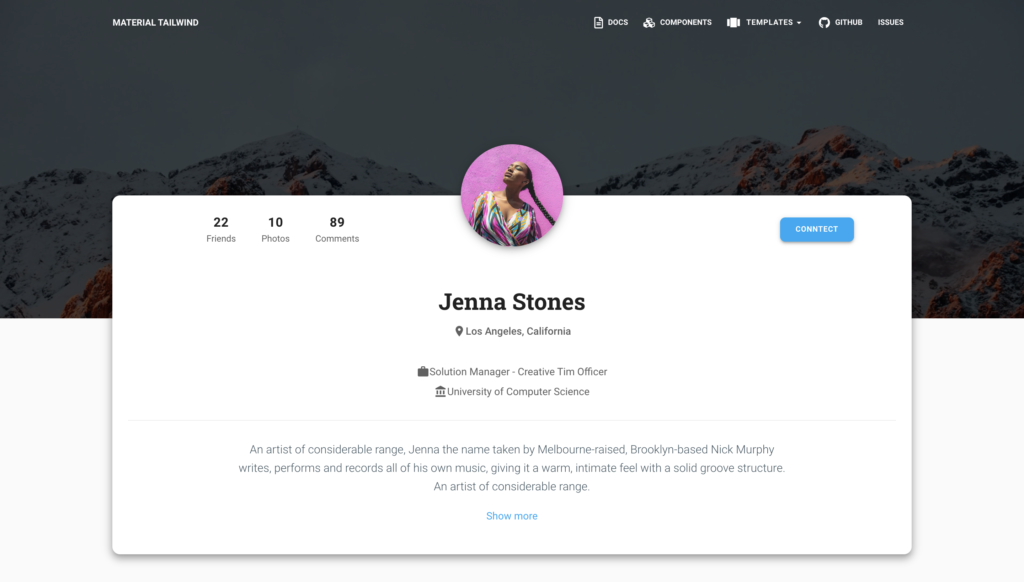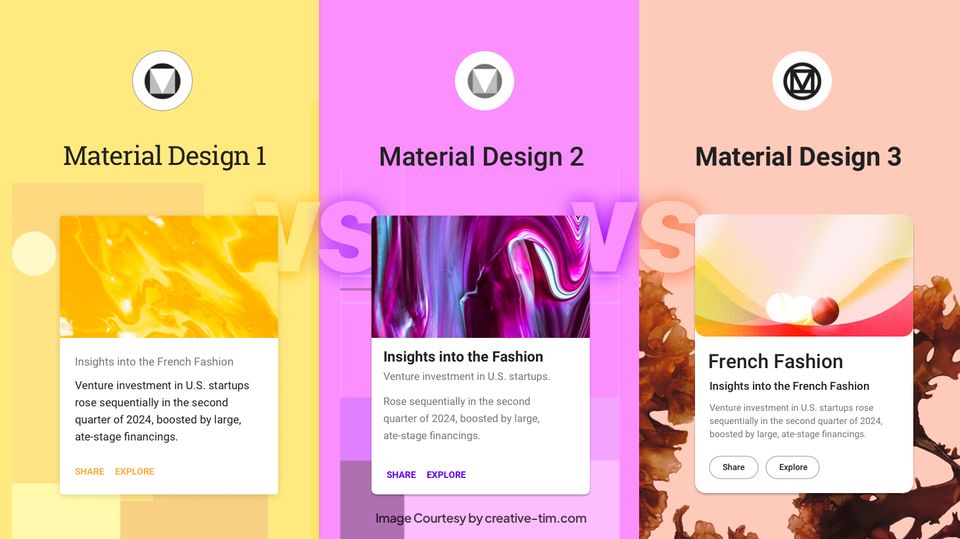When talking about the user interface, the most important thing is its appearance. It is the interaction point with the user’s attention. However, building a beautiful and effective appearance is not easy because it needs spending time and a lot of skills.
In this case, the good part is that there are some workarounds, like frameworks and libraries (e.g. Tailwind CSS), which facilitate the process of building user interfaces (but not that much like you’re thinking about).
OK, are you looking for a simple, easy, and quick way to build a better and beautiful user interface? If the answer is YES then you should take a look over Material Tailwind. Read this article to find out why.
What is Material Tailwind?
Material Tailwind is a framework for building user interfaces, an open-source project by Creative Tim. It is using Tailwind CSS – a utility-first CSS framework, and Material Design 2 guidelines – a modern design system developed by Google.

Material Tailwind
The first version of Material Tailwind has been released based on ReactJS, the most popular JavaScript library for building user interfaces.
So before we deep dive into Material Tailwind’s details, let’s take a look at Tailwind CSS, Material Design 2, and ReactJS.
What is Tailwind CSS?
Tailwind CSS is a utility-first CSS framework packed with classes that can be composed to build any design directly into your markup.
Compared to other CSS frameworks like Bootstrap, it doesn’t come with predefined components; instead, Tailwind CSS provides you a set of CSS helper classes. Using these classes, you can create custom designs and user interfaces with ease.
For more information about Tailwind CSS, you can check the Tailwind CSS website: https://tailwindcss.com
What is Material Design 2?
Material Design 2 is the most popular, modern, and comprehensive design system developed by Google that helps you build high-quality digital experiences.
The design system itself is a comprehensive set of useful guides and helpful tools that developers or designers can use for building modern, trendy and user-friendly user interfaces that adhere to material style.
For more information about Material Design 2, you can check the Material Design 2 website: https://material.io/
What is ReactJS?
ReactJS is the most popular front-end JavaScript library for building fast and interactive user interfaces. It is an open-source, component-based, front-end library responsible only for the application’s view layer in Model View Controller (MVC) architecture.
For more information about ReactJS, you can check the ReactJS website: https://reactjs.org/
Why Material Tailwind?
Therefore, as you read above, Material Tailwind has been built using the most popular technologies and trends around the world.
As I said before, building a user interface is not easy, even if you’re using Tailwind CSS. It comes up with different helper classes, and you need to play around with thousands of helper classes to build a simple user interface that makes your code cluttered. Also, add the fact that you need to build everything from scratch, which takes a lot of time. ☹️
By using Material Tailwind you can build a user interface as quickly and easily as possible because you don’t need to build everything from scratch or play around with Tailwind CSS helper classes. Material Tailwind provides you all the important and necessary components for building a user interface in the format of ReactJS components with the space of Material Design 2 and Tailwind CSS helper classes 😍
Who can use Material Tailwind?
Material Tailwind is a free and open-source project and everyone can use it, you only need to have a basic knowledge of ReactJS.
Material Tailwind Components
As I said before, Material Tailwind contains all the necessary and important components for building a user interface.
- Alerts
- Buttons
- Cards
- Dropdowns and Dropups
- Images
- Inputs
- Labels
- Menus
- Modals
- Navbars
- Paginations
- Popovers
- Progress bars
- Tabs
- Tooltips
- Typography

Material Tailwind – Alerts Examples
Material Tailwind – Buttons Examples
You can check here the components: https://material-tailwind.com/components.
Also, this awesome framework comes with 3 fully coded sample pages. You can start working instantly.
Material Tailwind – Login Page
Material Tailwind – Profile Page
But it’s not the end of the story and we will expand and add more components to Material Tailwind in the near future.
Material Tailwind is open-source
Material Tailwind is an open-source project, and everyone can contribute to making Material Tailwind better. You can contribute to solve different issues or expand its components.
Note: Before contributing to Material Tailwind, please read the contributing guideline: https://github.com/creativetimofficial/material-tailwind/blob/main/CONTRIBUTING.md
In the near future
As I said before, the first version of Material Tailwind is only available for ReactJS, but soon, you will see the other versions for Vue.js, Angular.js, Svelte, and Vanilla Javascript.







